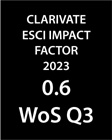The Studying the cultural image of border towns, specifically that of the twin towns of Komárom and Komarno
DOI:
https://doi.org/10.17649/TET.39.1.3577Keywords:
cultural image, cultural identity, regional particularities, culture-related attitudesAbstract
This study aims to examine the possibilities of developing the cultural image in border towns, specifically with regards to the twin towns of Komarno and Komárom (North and South Komárom) located in the regions of Western Hungary and Southern Slovakia. The analysis reveals the identity-shaping power of the narrowly defined cultural image, the opportunities it provides the twin towns and examines hitherto undiscovered potentials of image building and strengthening of identity. The main research question focuses on the way the attractiveness of the cultural image of the towns of Komárom and Komarno can be developed and how the attitude of the population of the two towns, related to cultural identity, has changed. Furthermore, the analysis highlights the opportunities and shortcomings of developing the cultural image in border towns, which can contribute to the promotion of the shared cultural image of the twin towns, to strengthening the “Komárom” identity, as well as to increasing the international reputation by improving the cultural quality of the region.
The study presents how shared symbols, joint cultural and artistic festivals, and common historical memories generate development in the building of the two cities' image, building a bridge across the border and forming the foundation for creating and further developing a shared cultural image.
In our times, innovative digital solutions and visual elements enabled by technological advancements can lead to the renewal of cultural images. The research reveals that these processes do not always influence the culture-related attitudes of the inhabitants of the two towns to the same extent, due to differences in the quality and extent of local digital infrastructure and media representation.
The empirical research, based on the analysis of cultural image, focuses on the cultural functions available in the towns and the services provided by cultural institutions. To analyze these, it is crucial to examine how cultural functions are distributed between the towns and what cultural services each settlement provides to the local population. Addressing these questions required conducting questionnaire surveys and interviews.
Downloads
Published
How to Cite
Issue
Section
License
Copyright (c) 2025 Csöppüs Dóra

This work is licensed under a Creative Commons Attribution 4.0 International License.
Authors wishing to publish in the journal accept the terms and conditions detailed in the LICENSING TERMS.






